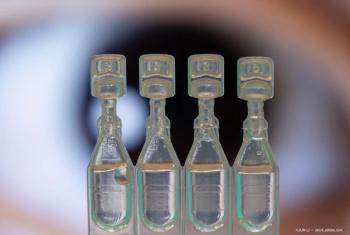
Dermis fat graft: neglected in management of socket problems?
Dermis fat grafts have become "overlooked" as orbital implants in favor of newer alternatives but deserve to maintain a role in primary and secondary socket implant procedures, and more complex socket problems, said James A. Katowitz, MD, Children's Hospital of Philadelphia.
New Orleans-Dermis fat grafts have become "overlooked" as orbital implants in favor of newer alternatives but deserve to maintain a role in primary and secondary socket implant procedures, and more complex socket problems, said James A. Katowitz, MD, Children's Hospital of Philadelphia.
Dr. Katowitz outlined uses for dermis fat grafts at a combined meeting of the American Academy of Ophthalmology and the American Society of Ocularists.
Dermis fat grafts may be particularly beneficial for children, since the implants will increase in size as a child grows. Conditions for which they might be used as a primary implant include congenital microphthalmia or after enucleation, while as a secondary implant fat grafts could be used to cover exposure problems with the primary implant or in cases of an infected integrated implant, Dr. Katowitz said.
Fat grafts may also be used to treat complex socket problems such as infection or necrosis or following radiation and enucleation related to retinoblastoma treatment. In the latter case, the assistance of craniofacial surgeons is important to appropriately address all aspects of the case, Dr. Katowitz recommended.
Newsletter
Don’t miss out—get Ophthalmology Times updates on the latest clinical advancements and expert interviews, straight to your inbox.














































.png)


